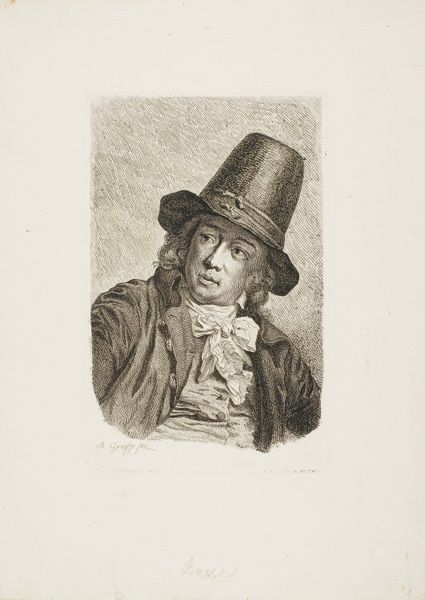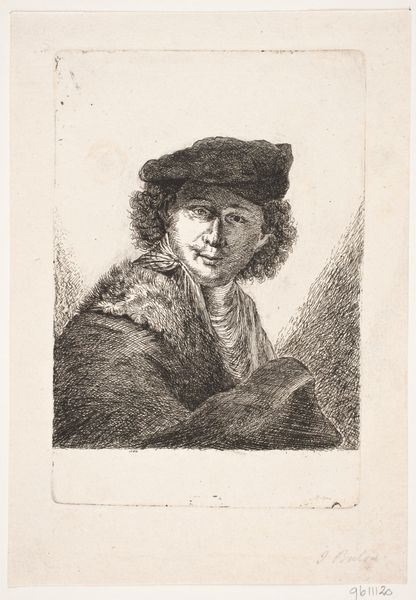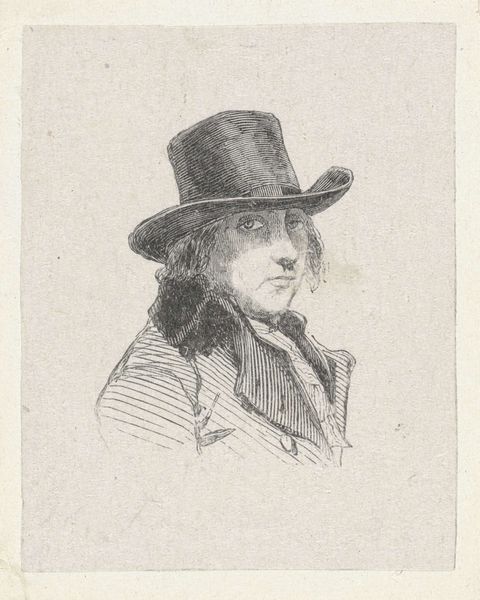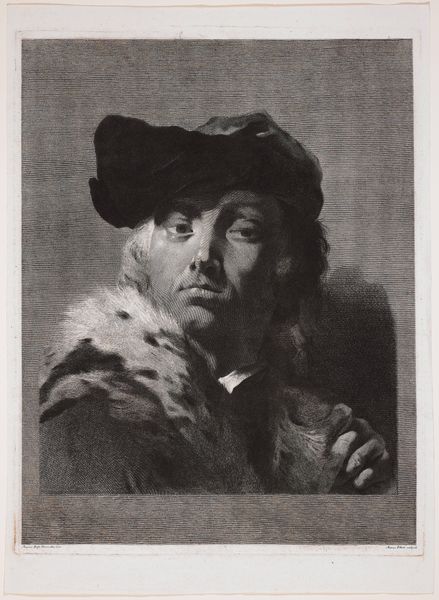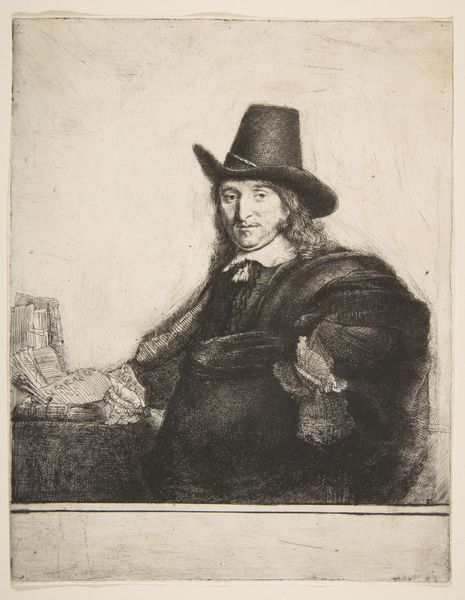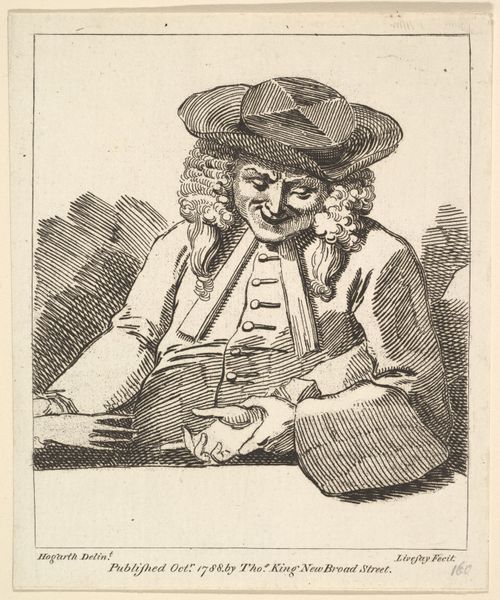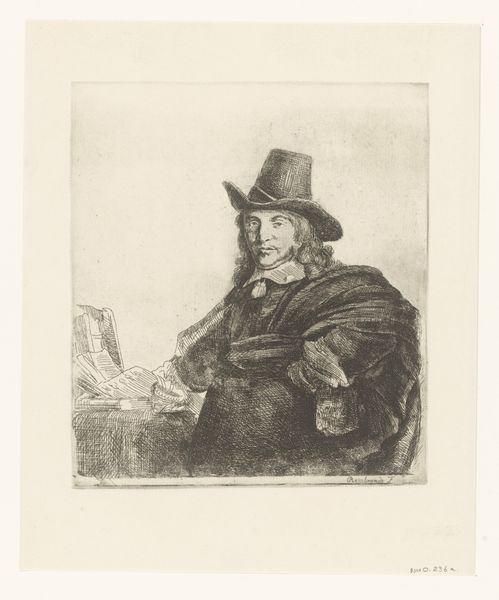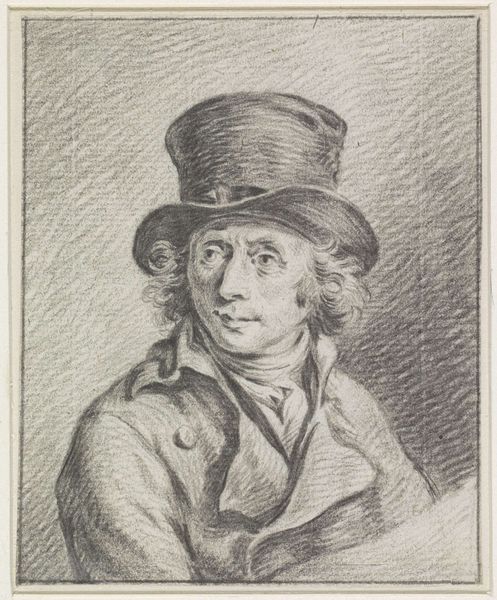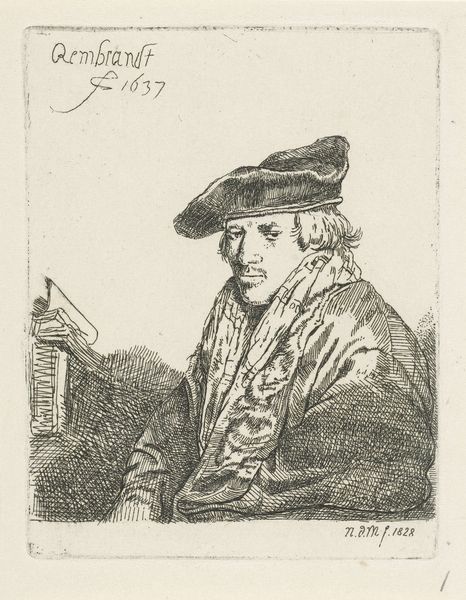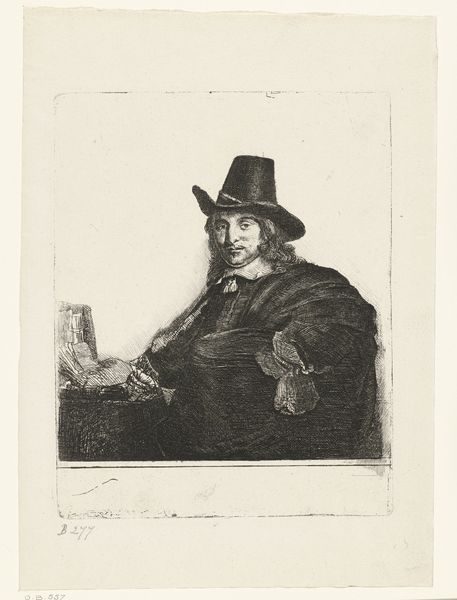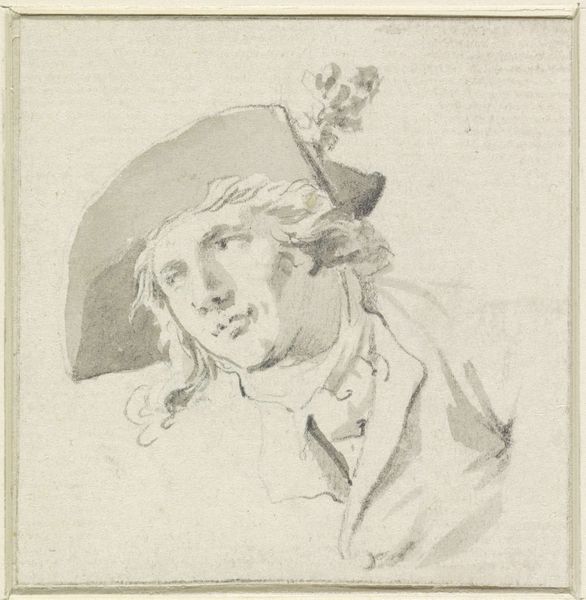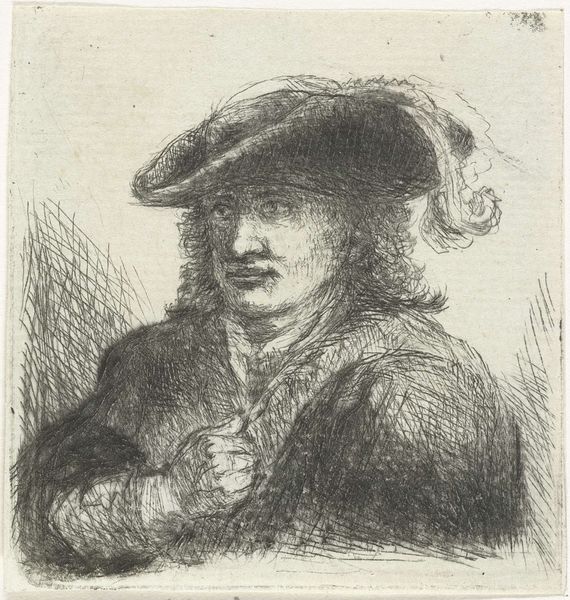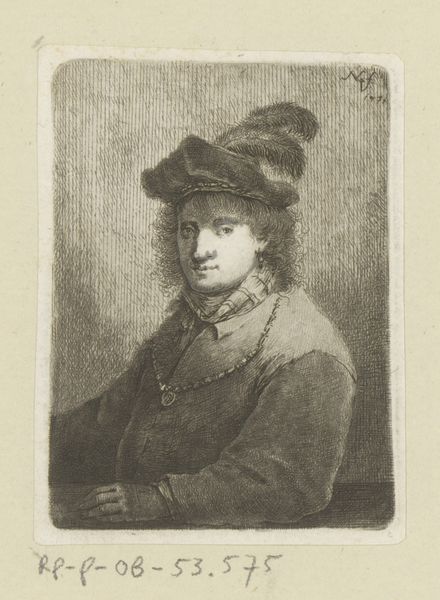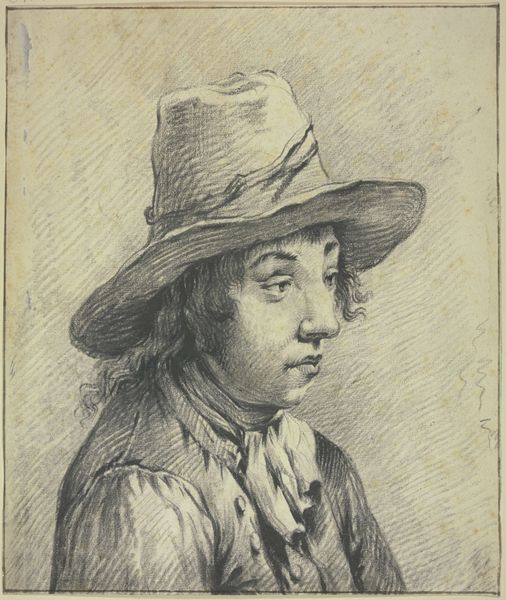
Dimensions: plate: 18.3 x 10.9 cm (7 3/16 x 4 5/16 in.) sheet: 23.3 x 16.7 cm (9 3/16 x 6 9/16 in.)
Copyright: National Gallery of Art: CC0 1.0
Curator: Before us, we have Anton Graff's print of Detmar Friedrich Wilhelm Basse, created around 1782. The delicate engraving captures the essence of the sitter. It strikes me immediately as a rendering of social standing in the late 18th century. Editor: I find it technically compelling; the contrasting textures, achieved solely through line work, are striking. Look at the roughness of the hat compared to the softness implied in the ruff. Curator: Basse was an entrepreneur known for his involvement with the theater, which introduces another layer to interpreting this piece. Consider the social context: theatrical involvement was sometimes frowned upon by certain social strata. Basse defies simple categorization. Editor: I am less concerned with what he represents and more focused on how Graff portrays him. Notice how the artist uses varying densities of cross-hatching to define the contours of the face and create volume. The technique brings the man to life on a flat surface. Curator: The gaze he offers is fascinating, isn't it? There's a subtle defiance there, perhaps even a challenge to the viewer’s own preconceptions about class and propriety. What does it mean to be represented this way? Is Graff playing into or pushing back against stereotypes? Editor: It is also quite Baroque, with dramatic use of chiaroscuro effects, but distilled to purely linear means. See how light glances off his brow and the tip of his nose, guiding the eye? Curator: Considering Graff was a prominent portraitist, the rendering challenges typical portraiture. This seems an exploration of character and even the performative nature of identity. Editor: An insightful observation! And those meticulously etched lines that constitute the composition demonstrate great skill, reducing the figure to its simplest formal elements while preserving recognizability. Curator: He exists at a moment of intense political and cultural change; understanding Basse in his time highlights tensions around commerce, art, and aristocracy. Editor: Precisely. But the lasting testament to the success of the image stems from a compelling compositional tension that stems from contrasts of dark and light and controlled yet lively strokes. Curator: Thank you. I’m reminded of the importance of understanding the figures of art through their own agency, their capacity to embody complex historical currents and reflect how we see today. Editor: And I am grateful to have reaffirmed that through close observation, one finds that meaning can be built layer upon layer into even the most formally reductive compositions.
Comments
No comments
Be the first to comment and join the conversation on the ultimate creative platform.
